Have you ever looked at a power outlet, plug in hand, and wondered if it’s safe for your new appliance? Maybe you’ve traveled and accidentally ruined a hair dryer, making you realize how important voltage is. Electricity keeps our homes running, but many people aren’t sure what voltage really means.
Knowing how many volts your outlets provide isn’t just for electricians. It’s important for home safety and keeping your appliances working. Using the wrong voltage can damage electronics, trip breakers, or even cause fires. If you’re installing a new dryer, buying a powerful tool, or setting up a home office, it’s important to know the difference between 120V and 240V.
This guide will explain what the voltage numbers mean. We’ll cover the standard voltage in North American homes, when you need higher voltage, and how to test your outlets safely. As experts serving Austin and Lakeway, the Magnify Electric team wants to help you keep your home safe and running smoothly.
The Short Answer: What is the Standard Voltage?
In the United States, Canada, and the rest of North America, the standard wall outlet operates at 120 volts. (Electrical 101, 2025)
If you check the standard outlet in your living room, bedroom, or hallway—the one with two vertical slots and a round ground hole—it supplies 120 volts. This amount is just right for most of your everyday electronics, like phone chargers, laptops, TVs, and vacuum cleaners.
Why do some people say 110 Volts?
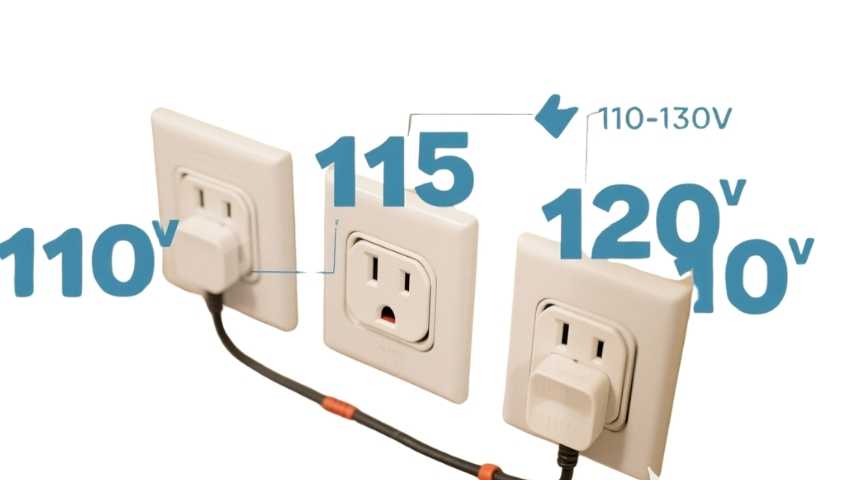
You might often hear people refer to standard outlets as “110,” “115,” orYou might hear people call standard outlets “110,” “115,” or “120.” These are not really different. People use these terms to talk about the same type of outlet.r (around 110V). Over the decades, utility companies gradually increased the voltage to run more efficiently, settling on the modern standard of 120V. (Why Did the U.S. Transition from 110V to 120V Supply?, 2025) However, because electricity travels over long distances from the power plant to your home, resistance in the wires can cause the voltage to drop slightly.
Therefore, a “120-volt” outlet usually delivers anywhere between 110 and 130 volts. (Holt, 2016) This fluctuation is normal. Most modern appliances are designed to operate within this range without any performance issues. (Mari, 2022)
When Do You Need More Power? (120V vs. 240V)
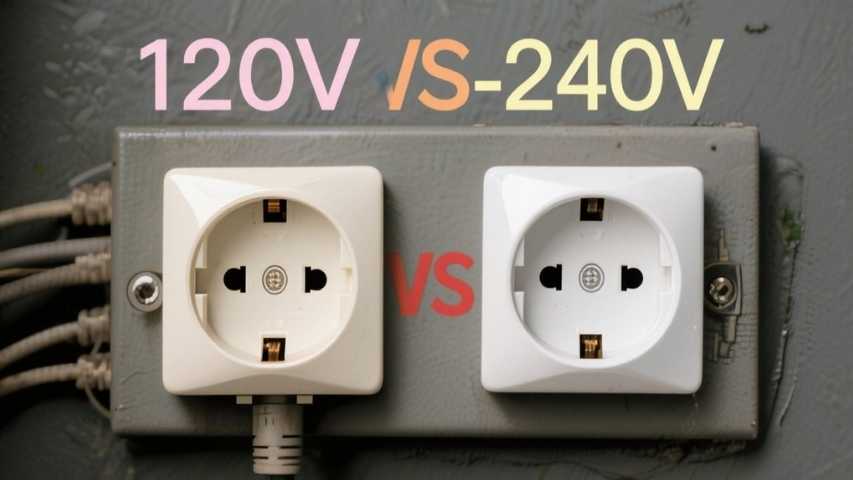
While 120 volts is enough for most things, some appliances need more power than a standard outlet can provide. It’s like trying to fill a pool with a garden hose—you’ll need something stronger. In your home, that means using a 240-volt outlet.
120-Volt Outlets (Standard Duty)
These are the workhorses of your home. They typically run on 15-amp or 20-amp circuits. (Residential Electrical 2-Day Course, PART 1, Doug Smith, WC3, n.d.)
- Uses: Lamps, computers, blenders, TVs, phone chargers.
- Appearance: Standard two-slot face (with or without a ground hole).
240-Volt Outlets (Heavy Duty)
These outlets provide double the electrical pressure (voltage), allowing large appliances to do heavy work without overheating wires or requiring incredibly thick cables. (NEMA 14-50 And Other 240V Outlets For EV Charging-What You Need To Know, 2025)
- Uses: Electric dryers, ovens/ranges, water heaters, central air conditioning units, and Level 2 Electric Vehicle (EV) chargers.
- Appearance: These outlets look very different so you don’t accidentally plug a 120V device into them. They usually have three or four holes in a special pattern and are bigger than standard outlets.
If you are planning a renovation or purchasing a new major appliance, ensure that the correct outlet voltage is available. For example, installing an EV charger in your garage often requires a dedicated 240-volt line, a service our technicians at Magnify Electric frequently perform for residents in Austin and The Hills.
The Relationship Between Volts, Amps, and Watts
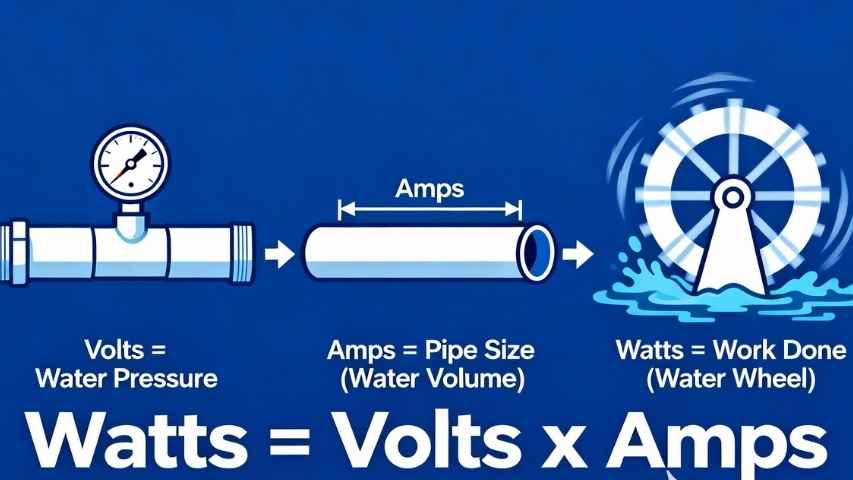
To really understand your home’s electrical system, you need to know about more than just voltage. You also have to think about Amps (amperage) and Watts (wattage).
Think of electricity like water flowing through a pipe:
- Volts are the water pressure.
- Amps are the size of the pipe (the volume of water flowing).
- Watts are the total amount of work the water can do (like spinning a water wheel).
The formula is simple: Watts = Volts x Amps.
Why Circuit Breakers Trip
Your circuit breaker panel is designed to protect your home from electrical fires. If you plug too many high-wattage devices into a single circuit, you demand more “flow” (Amps) than the wire can handle.
For example, a standard bedroom circuit is often rated for 15 amps.
- 120 Volts x 15 Amps = 1,800 Watts.
If you use a space heater (1,500 watts) and a hair dryer (1,500 watts) on the same 15-amp circuit, you’re using 3,000 watts. The breaker will shut off right away because you’ve gone over the 1,800-watt safety limit. This is meant to protect you, not because something is broken. If your breakers trip often, it’s a good idea to call an electrician to see if you need an upgrade or more circuits.
How to Measure Outlet Voltage Safely
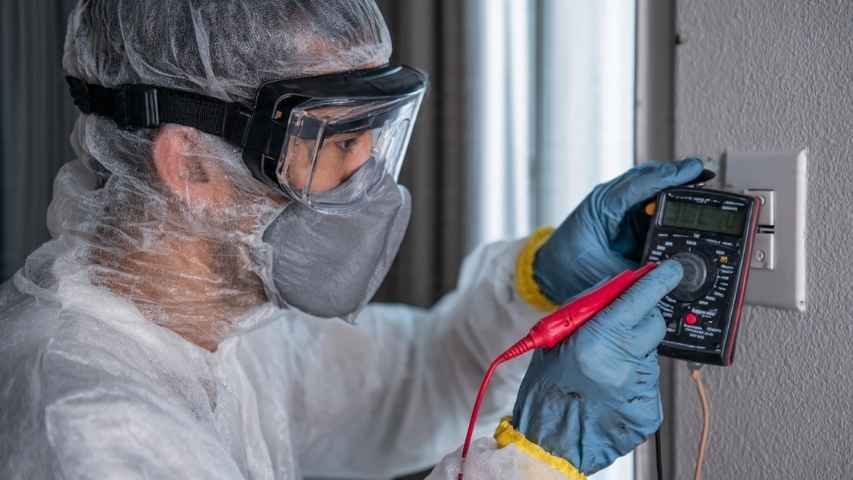
If you suspect an outlet isn’t providing the right power, or if you simply want to verify a voltage before plugging in sensitive equipment, you can test it using a multimeter.
Warning: Electricity is dangerous. If you are uncomfortable working with live electrical outlets, please get in touch with a licensed electrician.
Step-by-Step Guide:
- Set the Multimeter: Turn the dial to the AC Voltage setting (often denoted by a V with a wavy line).
- Handle Probes Safely: Hold the probes by the insulated handles. Do not touch the metal tips.
- Insert Probes: Insert the black probe into the neutral slot (the wider vertical slot) and the red probe into the hot slot (the shorter vertical slot).
- Read the Display: A healthy standard outlet should read between 110V and 130V.
- Test Grounding: You can also test the hot slot against the round ground hole. It should also read roughly 120V. If it reads zero, your outlet may not be adequately grounded.
For 240-volt outlets, the reading should fall between 200V and 240V. If you get a reading of zero, significantly low voltage, or fluctuating numbers, you likely have a wiring issue that requires professional attention.
Signs Your Electrical System Needs Attention
Voltage isn’t the only sign of electrical problems. Your home usually gives you warning signs before something serious happens. At Magnify Electric, our technicians, such as Tom and Taylor who have great reviews from local homeowners, often spot issues based on these common symptoms:
- Flickering Lights: If your lights dim when the AC kicks on or flicker randomly, you may have a loose connection or an overloaded circuit.
- Warm Outlets: Touch the plastic faceplate. It should feel cool, about the same as the room. If it feels warm or hot, stop using it right away and call a professional.
- Buzzing Noises: Electricity should be silent. A buzzing or crackling sound coming from an outlet or switch indicates arcing, a condition that poses a fire hazard.
- Burning Smell: An acrid, plastic-burning smell is a sign of an emergency. Turn off your primary power source if it is safe to do so and call an electrician immediately.
DIY vs. Professional Electrical Work
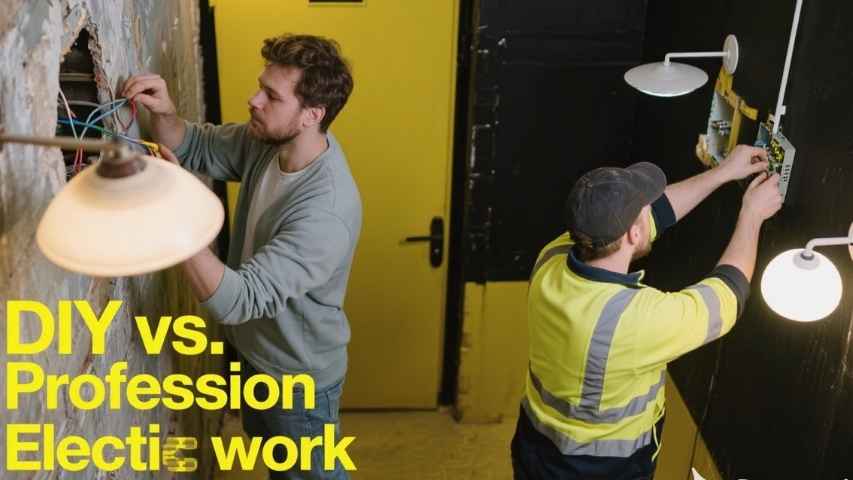
With the rise of home improvement videos, many homeowners feel empowered to tackle electrical projects. While changing a simple faceplate is generally safe for a DIYer, messing with wiring, voltage, and panels carries significant risk.
The National Electrical Code (NEC) establishes stringent standards for wiring to ensure safety. Compliance entails using the correct gauge of wire for the specified amperage, employing proper grounding techniques, and securing connections to prevent arcing. (1910.305 – Wiring methods, components, and equipment for general use, n.d.)
For example, installing a new 240-volt outlet for a hot tub or EV charger isn’t just about connecting wires; it requires calculating the load on your main panel to ensure your entire house doesn’t go dark. (Whole House Load Calculator | NEC 220.82 Compliant Electrical Load Calculation, n.d.)
Our team at Magnify Electric handles these complex installations. Whether you need new pendant lights in Spicewood or a whole-home surge protector in Liberty Hill, we make sure every job meets NEC standards. Our customer reviews show that we focus on professionalism, being on time, and clear communication. We avoid confusing jargon and deliver real results.
Frequently Asked Questions
Is 110V the same as 120V?
For all practical purposes in North America, the answer is yes. 120V is the modern standard, but 110V is an older term that is still widely used. If an appliance is rated for 110V, 115V, or 120V, it will work in a standard outlet.
Can I plug a 240V appliance into a 120V outlet?
No. Physically, the plug usually won’t fit. Even if you used an adapter (which is dangerous), the appliance would not receive enough power to operate and could be damaged.
How do I know if my outlet is 15 amps or 20 amps?
Look at the face of the outlet. A 15-amp outlet has two vertical parallel slots. A 20-amp outlet looks similar but has a horizontal “T” shape on the neutral (wider) slot. This allows 20-amp plugs to fit. You must check the circuit breaker to ensure the wiring behind the wall is also rated for 20 amps before installing a 20-amp receptacle.
Power Your Home Safely
Knowing about outlet voltage is the first step to a safer, smarter home. While 120V covers your daily needs, understanding when to use 240V lets you take advantage of modern appliances and electric vehicles. But if voltage changes or outlets act up, it’s too risky to guess.











